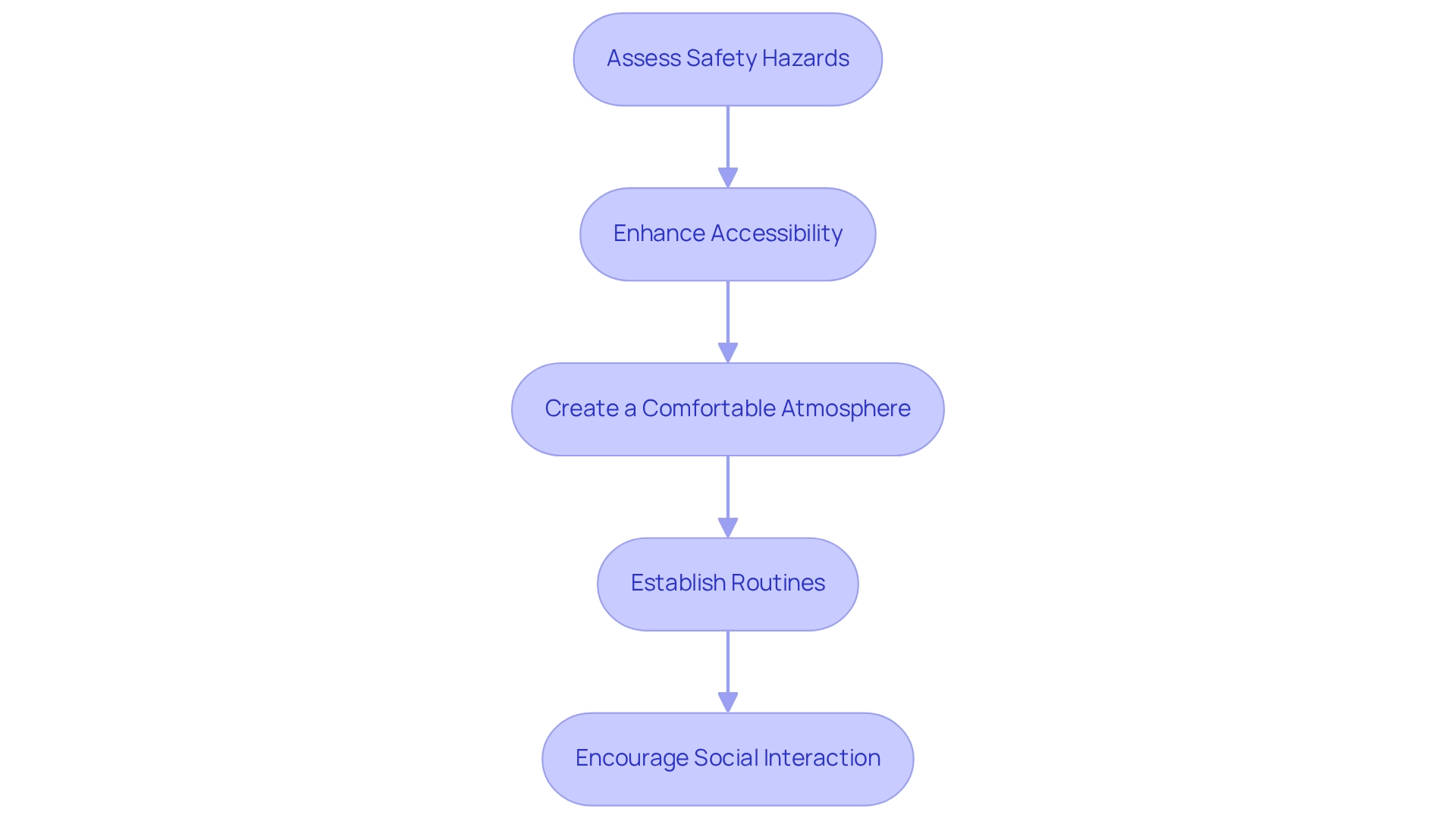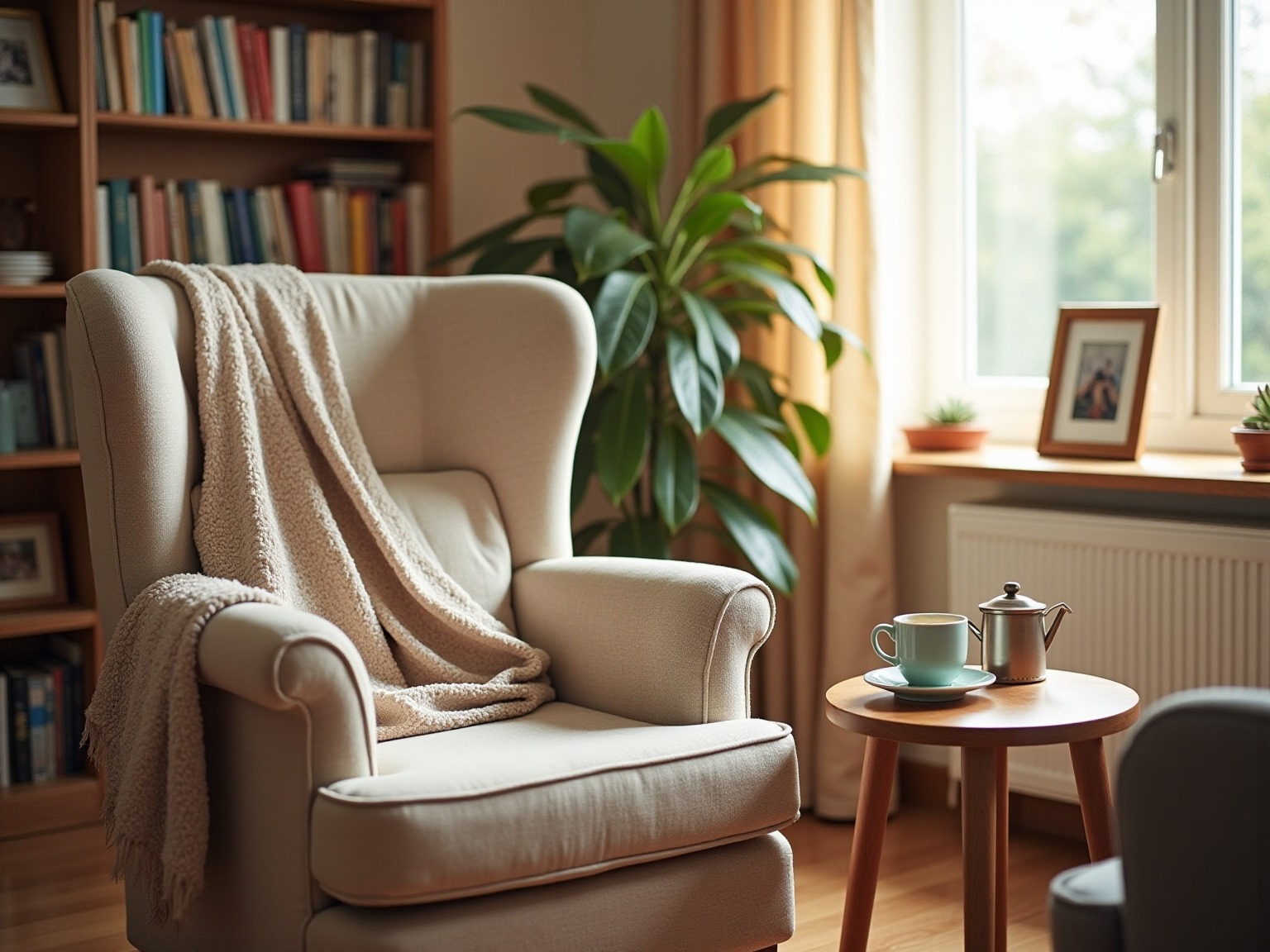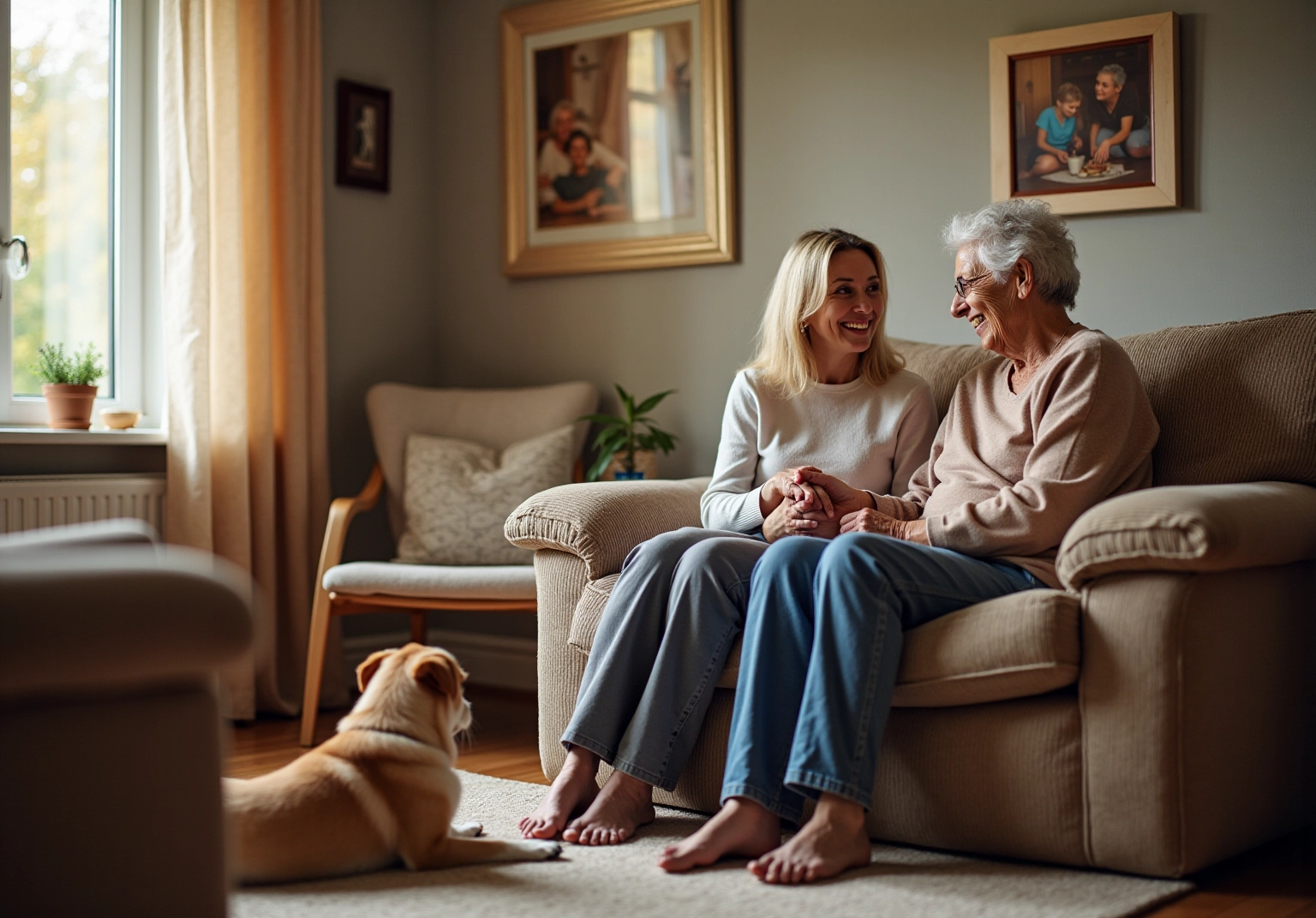Overview
Finding the right in-home caregiver for your loved ones can be a daunting task, but it’s essential for ensuring their comfort and safety. Start by assessing your loved one’s unique care needs, preferences, and living environment. This thoughtful evaluation lays the foundation for a successful search.
As you embark on this journey, thorough research and interviews with potential caregivers are crucial. Understanding the specific daily challenges and medical requirements your loved one faces will guide you in selecting the best match. Remember, a structured evaluation process not only enhances the chances of finding the right caregiver but also significantly improves your senior’s quality of life at home.
We’re here for you during this important decision-making process. By taking these steps, you can feel confident that you’re prioritizing your loved one’s well-being and safety. Together, we can ensure they receive the compassionate care they deserve.
Introduction
As our loved ones age, the need for effective caregiving becomes increasingly critical. Families often face the daunting task of ensuring that their cherished seniors receive the right support tailored to their unique needs. From assessing daily activities and medical requirements to finding the perfect caregiver, the journey of securing quality care can be overwhelming.
This article delves into essential steps for:
- Evaluating care needs
- Interviewing potential caregivers
- Creating a supportive environment that enhances the quality of life for seniors
With practical insights and expert advice, we aim to empower families to navigate this complex landscape with confidence. Remember, your loved ones deserve to thrive in a safe and nurturing setting, and we’re here to help you every step of the way.
Assess Care Needs and Preferences
- Identify Daily Activities: Begin by cataloging the daily activities your family member finds challenging, such as bathing, dressing, meal preparation, or medication management. Research indicates that approximately 70% of seniors require assistance with at least one daily living activity, underscoring the importance of in-home caregivers for seniors in determining the necessary level of support. Furthermore, with 94% of senior living communities heading into the new year short-staffed, evaluating these needs becomes even more critical to ensure adequate support. Without proper assistance from in-home caregivers for seniors, health declines, poor nutrition, and hygiene issues may arise, significantly impacting their overall well-being.
- Consider Medical Needs: Evaluate any medical conditions that require specialized assistance, such as diabetes management or mobility issues. This assessment will help you determine whether a provider with specific training or qualifications is necessary, ensuring that your family member receives suitable care customized to their health requirements. Incorporating the 4Ms Framework—What Matters, Medications, Mentation, and Mobility—can enhance this assessment and improve health outcomes for older adults. Additionally, consider that missed medications or inadequate monitoring can lead to adverse health effects, highlighting the crucial role of in-home caregivers for seniors.
- Discuss Preferences: Involve your loved one in conversations about their support preferences. Factors such as gender, personality traits, and language proficiency can significantly influence their comfort and trust in the provider. Engaging them in this discussion fosters a sense of autonomy and respect for their wishes.
- Evaluate Living Environment: Examine the home environment to identify necessary modifications that will accommodate the helper and enhance safety for the senior. This includes assessing for fall hazards, ensuring accessibility, and making adjustments that promote independence while minimizing risks. An unsafe living environment can increase the risk of accidents, making this evaluation crucial.
- Document Findings: Compile a comprehensive document summarizing the requirements and preferences identified during your evaluation. This reference will be invaluable when interviewing potential in-home caregivers for seniors, ensuring that all critical aspects are addressed and that the selected caregiver aligns with your loved one’s unique requirements.
Integrating technological tools can further improve coordination and communication among support teams, residents, and families, ensuring that everyone is informed and involved in the assistance process. As Aisha Terry, MD, MPH, FACEP, president of the American College of Emergency Physicians, states, “This measure takes important steps to promote the highest standards of treatment for older patients.” By taking these steps, families can effectively evaluate and tackle the support needs of their loved ones, ultimately enhancing their quality of life.
Furthermore, consider the case study of Alberto, who identified transportation obstacles to preventive services for older adults in rural regions. His initiative to establish a shuttle service for medical appointments illustrates the importance of evaluating care needs and addressing practical challenges.

Evaluate and Interview Potential Caregivers
- Research Providers: Start by creating a list of potential caregivers through referrals, agencies, or online platforms. It’s important to look for reviews and testimonials to understand their reputation. Think about the specific needs of your loved one, such as challenges with personal hygiene, dressing, or managing medications. These considerations may indicate the need for Certified Nursing Assistant (CNA) or Home Health Aide (HHA) services.
Prepare Interview Questions: Formulate a list of questions to ask during the interviews. Focus on their experience, training, and approach to caregiving. Here are some examples:
- What experience do you have with seniors who have similar needs?
- How do you handle emergencies?
- Can you provide references from previous clients?
- Are you familiar with assisting individuals with chronic conditions or those recovering from surgeries?
- Conduct Interviews: Arrange interviews with potential caregivers. Pay close attention to their communication style and how they interact with your loved one; this can reveal their personality and compatibility. It’s essential that in-home caregivers for seniors are trained in both medical tasks and personal support. CNAs typically focus on medical assistance, while HHAs emphasize daily living activities.
Check Backgrounds: Conduct background checks to ensure the individual has a clean record. Verify their credentials and any certifications they claim to have. This step is crucial for ensuring quality support and safety for your loved one.
Trial Period: If possible, set up a trial phase where the caregiver can assist your family member for a few hours or days. This allows both parties to assess compatibility before making a long-term commitment. Regularly connect with your loved one to discuss their experiences and any concerns, and maintain open dialogue with the health provider to ensure quality care.
To obtain personalized home health care, call Best Care Nurses Registry at (888) 203-2529. Our compassionate team is here to assist you in discussing your needs and connecting you with providers who are the right match for your family.

Create a Supportive Care Environment
- Assess Safety Hazards: Conducting a thorough walkthrough of the home is essential to identify potential hazards such as loose rugs, inadequate lighting, and clutter. Addressing these issues promptly can significantly minimize fall risks, a leading cause of injury among seniors. Did you know that nearly one in four older adults experiences a fall each year? This statistic highlights the critical need for a safe living environment. At Best Care, our dedicated staff, including CNAs and HHAs, play a crucial role in recognizing and reducing these risks, ensuring a safer environment for your family member. Our in-home caregivers for seniors provide essential assistance for daily living activities, available for hourly support to tailor care to your needs.
- Enhance Accessibility: It’s important to ensure that key areas of the home, particularly bathrooms and kitchens, are easily navigable. Installing grab bars, non-slip mats, and ensuring that frequently used items are within easy reach can significantly improve safety and independence. Research shows that home modifications can lead to a nearly 10% reduction in hospitalizations for seniors, underscoring the value of proactive adjustments. Best Care is here to help facilitate these modifications, ensuring that your family member’s home is both safe and accessible. Our in-home caregivers for seniors are also available to provide the necessary assistance to maintain their daily routines.
- Create a Comfortable Atmosphere: Personalizing the living space with familiar items can evoke comfort and security for your loved one. Incorporating family photos, favorite blankets, or cherished decorations helps create a nurturing environment that promotes emotional well-being. As Susan Allen, PhD, notes, creating a supportive environment is essential for enhancing the quality of life for seniors. Best Care’s staff, who are in-home caregivers for seniors, also provide companionship, reducing feelings of loneliness and enhancing mental health, offering the emotional support that is essential for overall well-being.
- Establish Routines: Collaborating with the guardian to create daily routines offers structure and predictability. This approach not only helps reduce anxiety but also fosters a sense of security, which is essential for seniors facing health challenges. Best Care’s attendants, as in-home caregivers for seniors, are trained to establish and uphold these routines, ensuring that your family member feels safe and supported while addressing their individual needs and preferences.
- Encourage Social Interaction: Cultivating an environment that promotes socialization is vital. Arrange visits from family and friends or engage in community activities that resonate with the senior’s interests. Social interaction is crucial for mental health and can significantly enhance the quality of life for elderly individuals. Best Care also assists families with long-term care insurance claims, helping to maximize benefits that can support social activities and in-home caregivers for seniors, enriching your loved one’s life even further. To learn more about how we can assist you, call Best Care Nurses Registry at (888) 203-2529 to schedule a consultation.

Conclusion
Navigating the complexities of caregiving for aging loved ones is a significant responsibility that requires careful consideration and planning. By thoroughly assessing care needs and preferences, families can identify the specific support required, ensuring that seniors receive the assistance they need for daily activities and medical management. Engaging seniors in these discussions not only respects their autonomy but also fosters trust and comfort in the caregiving process.
Selecting the right caregiver is equally crucial. Through diligent research, thoughtful interviews, and background checks, families can find caregivers who not only possess the necessary skills but also align with the emotional and personal needs of their loved ones. A trial period can further ensure compatibility, allowing families to make informed decisions that prioritize the well-being of the senior.
Creating a supportive environment enhances the overall quality of life for seniors. By addressing safety hazards, enhancing accessibility, and establishing comforting routines, families can cultivate a nurturing space that promotes independence and emotional well-being. Encouraging social interactions also plays a vital role in combating loneliness and fostering mental health.
Ultimately, the journey of caregiving is about ensuring that loved ones thrive in a safe and supportive atmosphere. By following these essential steps, families can approach this challenging task with confidence, knowing they are making informed choices that positively impact the lives of their aging relatives. The care provided today lays the foundation for a healthier, happier tomorrow.
Frequently Asked Questions
What should I do first when assessing the support needs of a senior family member?
Begin by identifying daily activities that your family member finds challenging, such as bathing, dressing, meal preparation, or medication management. It’s important to recognize that around 70% of seniors require assistance with at least one daily living activity.
Why is it important to consider medical needs in the assessment process?
Evaluating medical conditions, such as diabetes management or mobility issues, helps determine if specialized assistance is necessary. This ensures that the family member receives care tailored to their health requirements, ultimately improving health outcomes.
How can I involve my loved one in the assessment process?
Discuss support preferences with your loved one, considering factors like gender, personality traits, and language proficiency. Engaging them in this conversation promotes a sense of autonomy and respect for their wishes.
What should I look for when evaluating the living environment?
Examine the home for necessary modifications to enhance safety and accommodate the caregiver. Assess for fall hazards, ensure accessibility, and make adjustments that promote independence while minimizing risks.
Why is it important to document the findings from the assessment?
Compiling a comprehensive document summarizing the identified requirements and preferences is essential for interviewing potential in-home caregivers. This ensures that all critical aspects are addressed and that the selected caregiver aligns with your loved one’s unique needs.
How can technology improve the caregiving process?
Integrating technological tools can enhance coordination and communication among support teams, residents, and families, ensuring everyone is informed and involved in the assistance process.
Can you provide an example of addressing practical challenges in senior care?
An example is Alberto’s initiative to establish a shuttle service for medical appointments in rural areas, which highlights the importance of evaluating care needs and addressing transportation obstacles for older adults.











